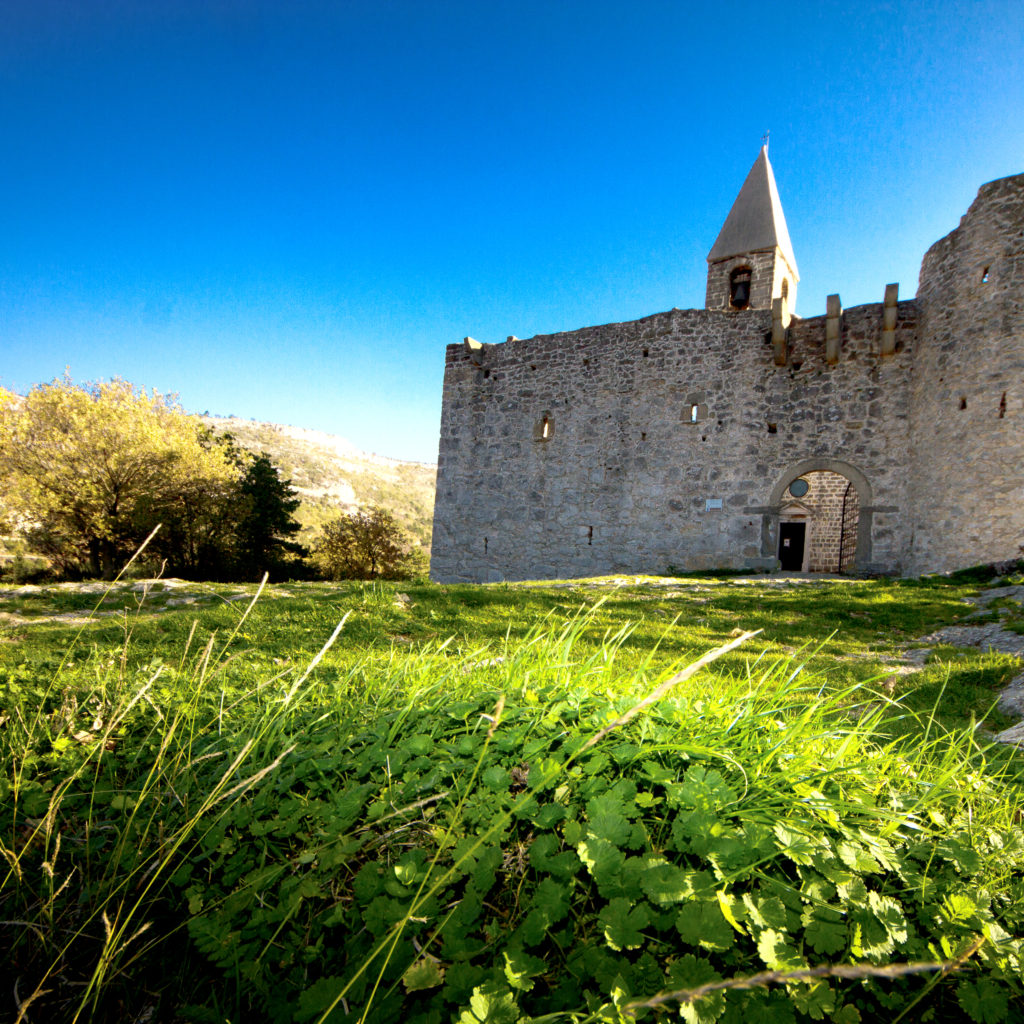The three-nave Roman church with a barrel vault and high bell tower is decorated with Gothic paintings from 1490. The frescoes are the work of Janez of Kastav and were in 1951 discovered by Jože Pohlen. The frescoes show the creation of the world, expulsion of Adam and Eva from the garden of Eden, scenes from the suffering of Jesus, work of farmers in various seasons and the dance of death. This is also the most famous part of the frescoes and represents an extraordinary achievement of the medieval iconography. Beside the frescoes, there is also the Glagolitic inscription.
The village is characterised by stone houses, tight streets, entrances, portals made of white Karst stone and, of course, the defence walls from the 16th century.
In the centre of the village, you can also visit the homestead at Hrastovlje 38 from the second half of the 17th century. It used to be the homestead of a well-known personage with exceptionally well-designed entrance.
Worth seeing is also the Gallery of Jože Pohlen, in which his sculptures and drawings – “laviranke” (ink wash drawings) – are presented.
The easiest way to see Hrastovlje and its sights is buying the experience Hrastovlje – Experience Istria.
The village is registered as settlement heritage in the Register of immovable cultural heritage of the Republic of Slovenia.
The theories about the name of the village are interesting. According to the first, the name of the village stems from the activities of the villagers who obtained coal from oak trees (“hrast – oglje” – oak-charcoal) and, according to the second, it stems from the description of the pilgrimage trail (Via del Cristo – Cristovia – Hrastovia – Hrastovlje).


